READY TO GET STARTED?
REQUEST A FREE ESTIMATE
Fill out the form below or call (888) 466-7849 for a free, no-obligation estimate.
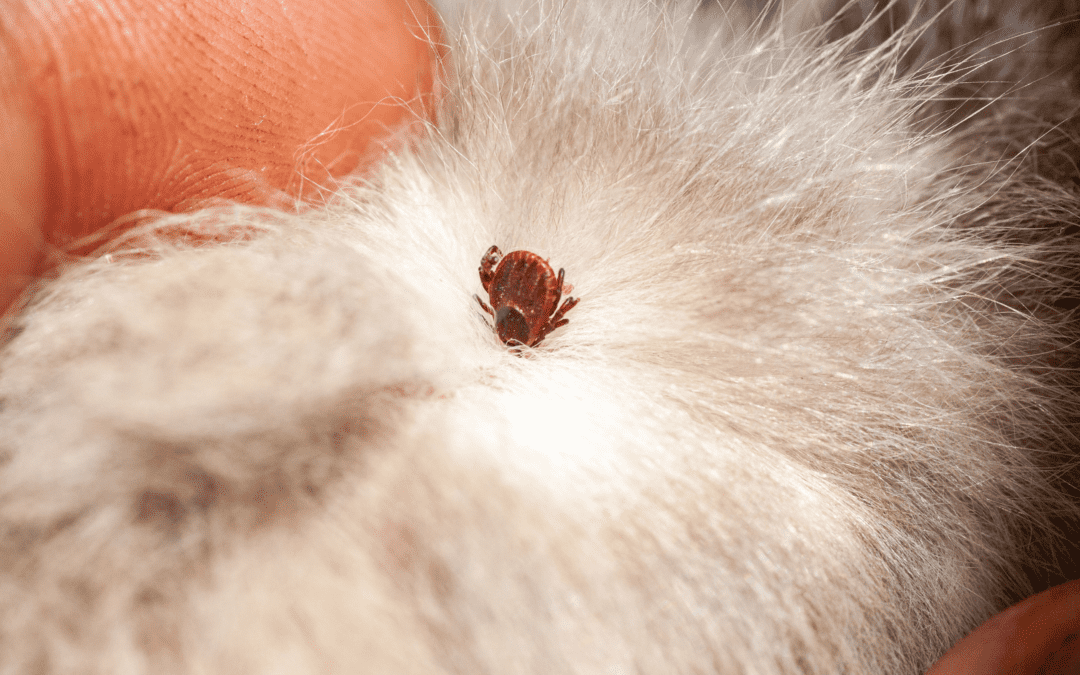
With the arrival of warmer weather, most of us will be spending more time outside with our pets. But while we enjoy being outdoors more, it can expose us and our pets to certain pests, such as fleas and ticks. These parasitic insects carry many diseases, including Lyme disease, anaplasmosis, and ehrlichiosis.
Fleas and ticks can be difficult to keep at bay, often taking weeks to control. There are many ways to protect you and your pets from these pests; continue reading to find out how.
While fleas and ticks are more common in the summer months, this doesn’t mean they are completely gone. Some tend to survive the winter months indoors, causing havoc year-round. To prevent your pets from being exposed throughout the year, check with your veterinarian to see the best treatment methods for them. Always properly administer and check the expiration date on any treatments given to your pets.
If your pet frequents the outdoors, inspecting them before returning indoors will help keep the fleas and ticks away. Ticks like to find warm spots, so checking your pet’s ears, skin, and under armpits are the best places to search. Remove any ticks you might find and reach out to your vet if your pet has been bitten.
Cleaning up your pet’s sleep area at least once a week is a good way to deter or get rid of any pests that have shown up. Get a dog/cat bed that is washable and wipe down their areas frequently. Vacuuming often is also a good way to keep fleas away.
Fleas are known to live in carpets, rugs, and pet bedding. They also avoid high traffic areas, so don’t miss vacuuming near baseboards, under furniture, under cushions, and anywhere your pets sleep or spend significant time.
Fleas prefer warm, moist, shady areas, while ticks like to hide in tall grass. Mowing your lawn regularly and keeping shrubs trimmed back will give them fewer places to hide in your yard.
Attracting wildlife will surely bring more ticks and fleas into your yard. Try not to leave food and water bowls outside overnight. Keep pet food sealed in containers, use trash cans with locking lids, and seal crawlspaces, garages, sheds, and decks.
If you have taken these preventative measures but are still experiencing a tick and flea problem, it might be time to reach out to your local pest control company for further assistance.
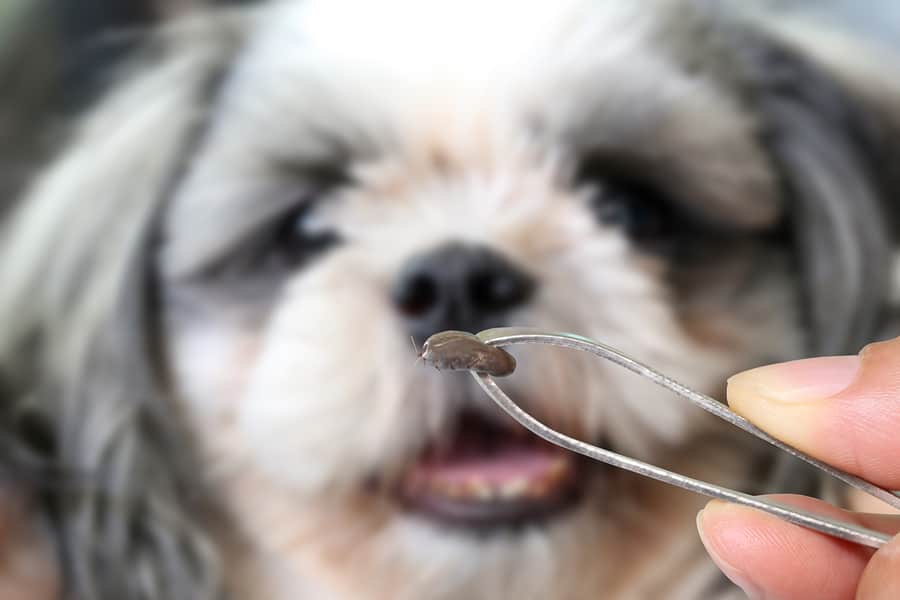
The weather is warming up, many of us are starting to spend time outside with our friends, family, and pets. Enjoying the outdoors has its benefits but also the disadvantage of coming across nuisance pests! Two common spring pests that can be harmful to both humans and pets are ticks and fleas. These insects will typically latch onto us or our animals, making their way inside homes, bringing the risk of infestation.
Fleas
Fleas tend to be dark red or brown, with their size varying between ½” to 1/6” in length. Fleas have a flat body, two antennae, and six legs. These pests will bite both humans and pets such as dogs and cats. Fleas have the incredible ability to jump to great heights, sometimes up to eight feet high! Jumping allows them to hitchhike into homes while hidden in pet fur. Dogs and cats will often get infested with fleas through contact with other animals or spending time outdoors. Once fleas have latched onto an animal host, they tend to stay there and then will easily transfer over to furniture or other animals. Fleas can be a health risk as their saliva is known to cause anemia, dermatitis, and facilitate and transfer tapeworms.
Ticks
There are two categories when identifying ticks: soft ticks and hard ticks. The soft tick will feed on bats and birds while the hard tick will feed on humans, pets, and nuisance wildlife. People and animals are likely to encounter ticks during the warmer months. Ticks can pose several health threats to humans and animals as they can transmit serious diseases such as Lyme disease and “tick paralysis.” Some tick species, such as the American Dog Tick, prefer to attach and feed on domestic dogs, which in turn allows them to sneak into our homes. When ticks feed, they can grow up to four times in size when engorged with blood, making them much easier to spot.
Controlling fleas and ticks can sometimes feel like an impossible task, especially if you have animals. If you suspect that you have a flea and tick problem, consider calling your local professional pest company who can thoroughly inspect your entire property and provide you with a treatment and prevention plan.
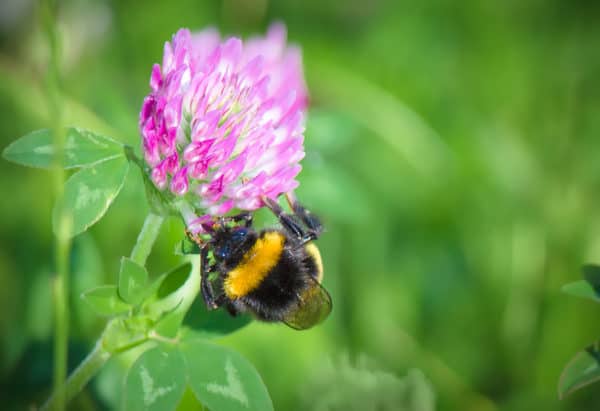
A household pest is any undesired animal that has a history of living, invading, causing damage to, eating food from, acting as a disease vector for, or causing any other harm to a human habitat. While most are considered a nuisance, household pests become dangerous when they pose a risk to health, property, or lifestyle. Household pests aren’t just limited to insects; they also include arachnids, rodents, and wildlife.
While household pests can be found year-round, some are more common in the summer months. Here are 8 of the most common summer household pests and how you can prevent them.
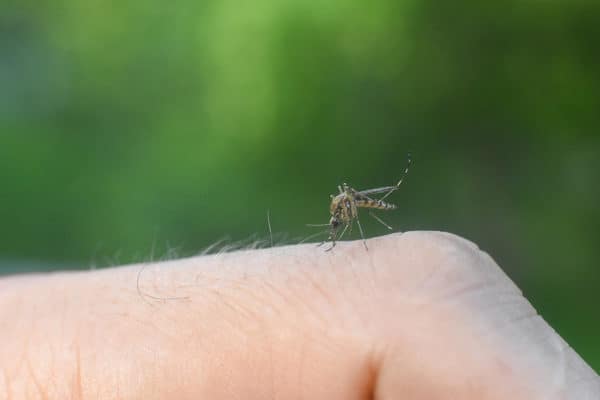
Mosquito season peaks in the summer months. The warm weather and humid environments accelerate their life cycle so they are able to reproduce in large numbers during this time. You are most likely to see mosquitoes when you have standing water on your property. Mosquitoes lay eggs in standing water and the hot, humid climate in summer is ideal for both breeding and to find food sources. Mosquitoes are dangerous to humans as they carry pathogens that can cause serious diseases like Zika and West Nile virus.
Mosquitoes can be prevented by:
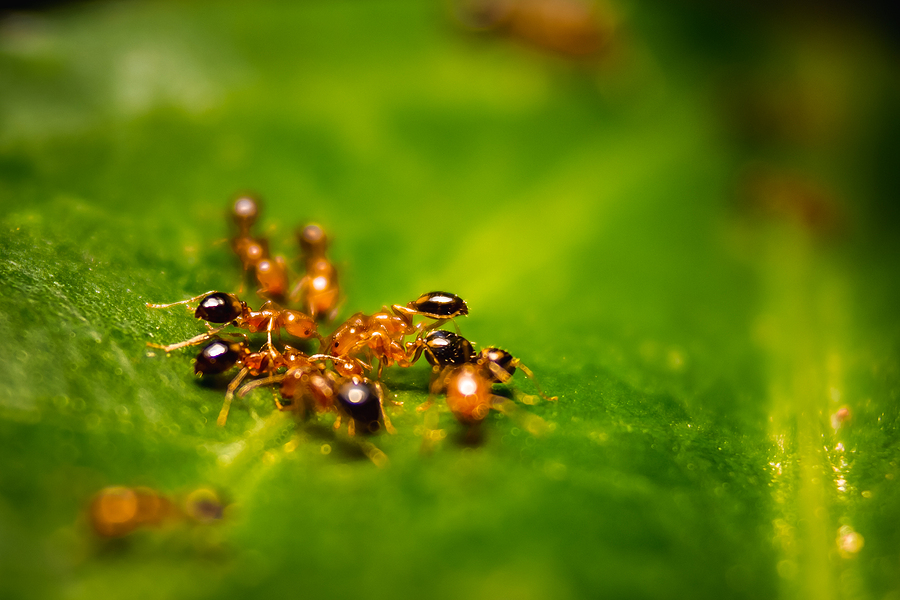
Ants hibernate in the winter and come out in full force over the summer. They have to forage in the summer months to feed their growing colonies and to build up their reserves for fall. Ants are usually seen indoors in the summer because they are searching for food and water as these can become scarce for them.
Ants can be prevented by:
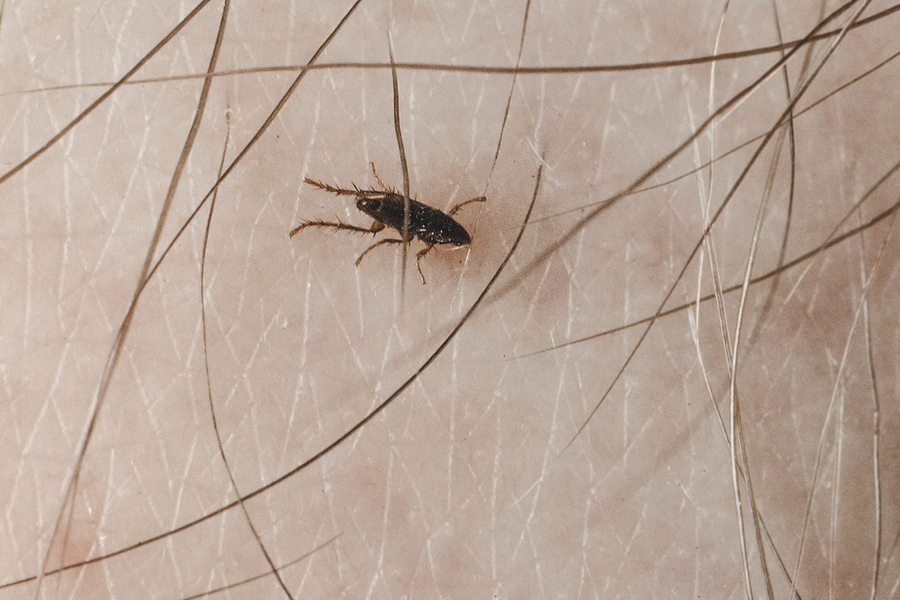
Fleas are prevalent in the summer months, although they can be found on pets year-round. Pets will indicate the presence of fleas by scratching and biting when they come in from outdoors.
Fleas can be prevented by:
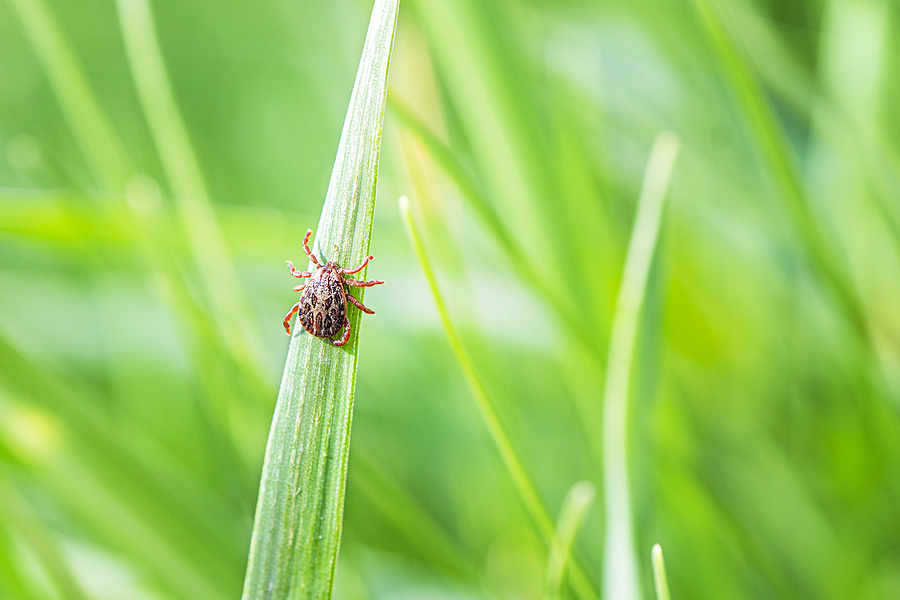
Ticks are problematic to humans and pets because they spread diseases like Lyme disease and Rocky Mountain spotted fever. Tick bites increase in the summer because people and animals are spending more time outside. The US is also seeing an increase in ticks because of the combination of mild winters and an increased population of deer and rodents which are known to carry ticks.
Ticks can be prevented by:
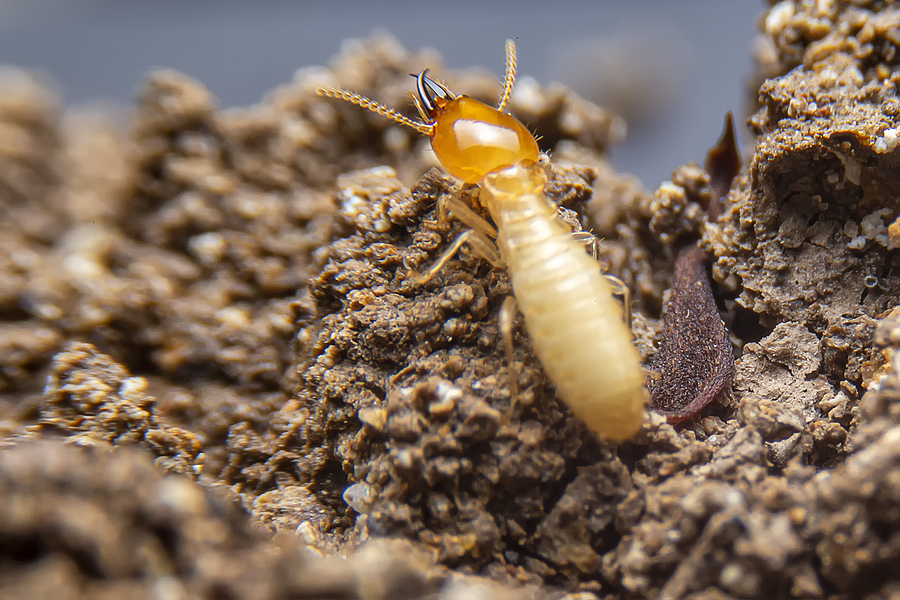
Termite swarming season is in the spring but these newly established colonies grow exponentially in the summer. Termites can go long periods of time undetected, causing significant damage to your home. It is important to keep an eye out for signs of termites so you can catch them early.
Termites can be prevented by:
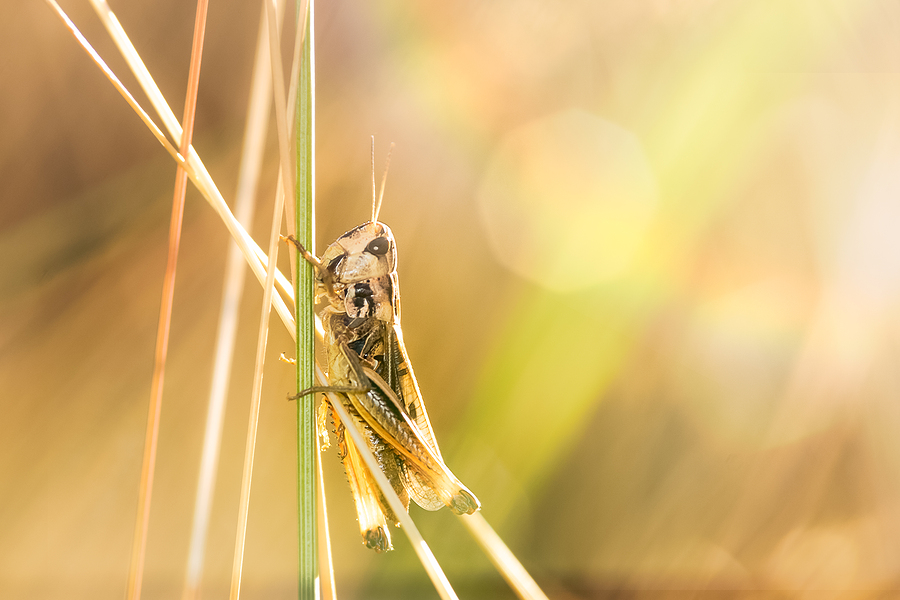
While most people view grasshoppers as just a nuisance pest, they can be devastating to gardeners and farmers. Grasshoppers can devour an entire field of crops in just a few days. Grasshoppers surge in large numbers in the summer months and are most prevalent in dry, hot summers. Grasshoppers can also cause damage to non-farmers as these are one of the only pests that can chew through screens.
Grasshoppers can be prevented by:
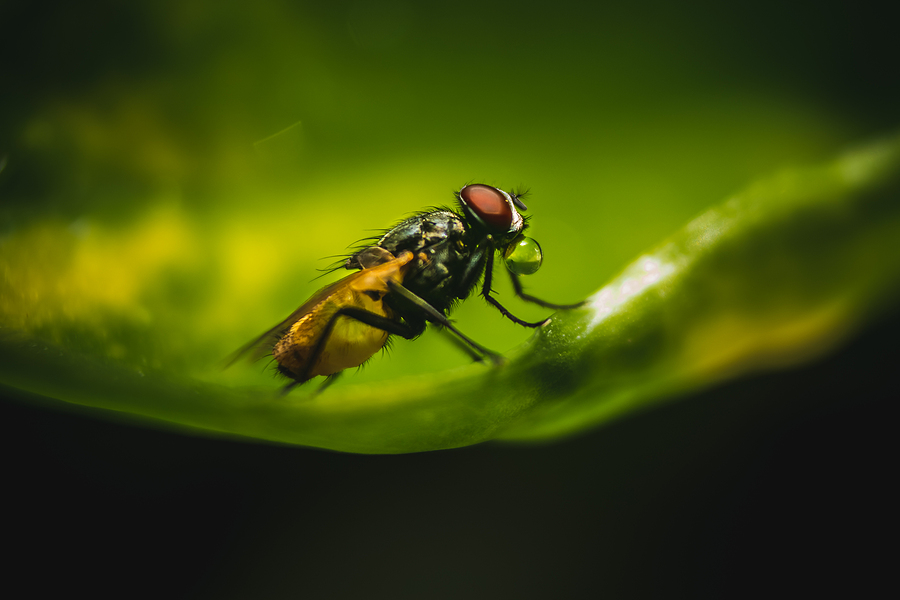
Flies invade your home in the summer months to escape the heat. They only reproduce during the hotter months and reproduce even more prolifically when they get indoors. Flies will stick around well into the fall months.
Flies can be prevented by:
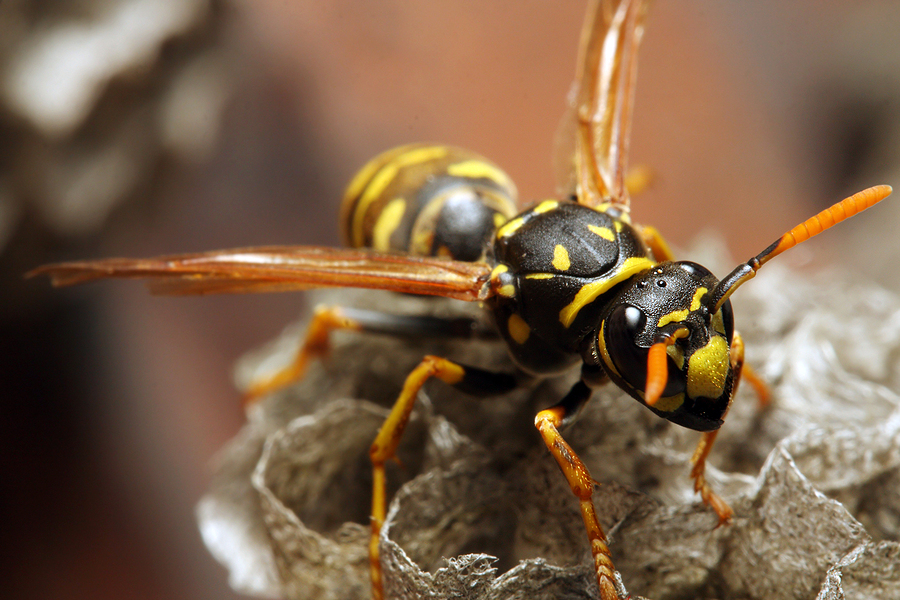
Stinging insects mate in the spring and their populations grow during the summer months. Hornets and yellow jackets are especially common in the summer because they have to establish new nests each year. These are usually found under decking or under piles of leaves. These stinging insects are potentially dangerous for people with allergies. Yellow jackets and bees can also get into the walls of homes, causing significant damage.
Stinging insects can be prevented by:
Don’t let these common summer pests ruin your summer. If you have a problem with any of these pests, contact a professional pest control company who can help eliminate them safely and prevent them going forward.
Termites: How to Stop Their Damage
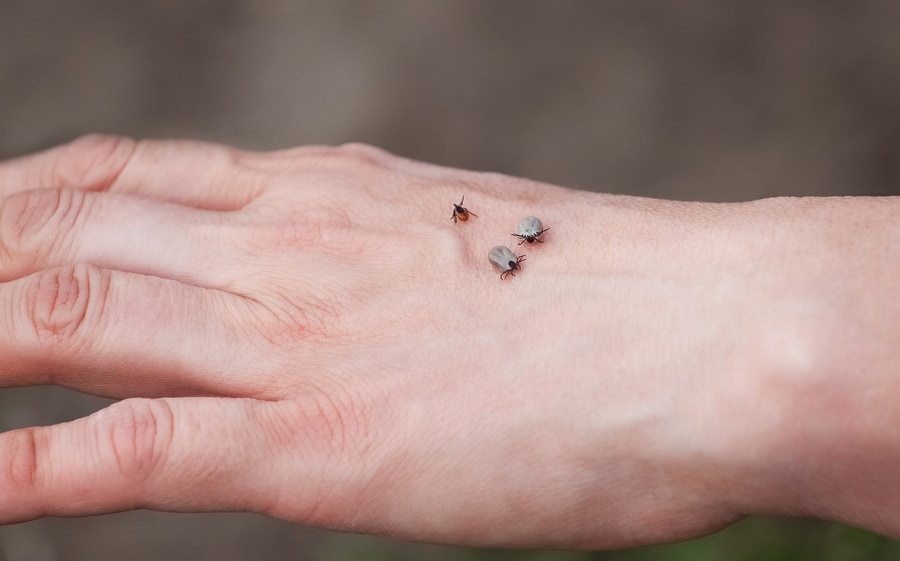
Nothing puts a stop to outdoor summer fun faster than an encounter with a tick or flea. A bite from either is irritating and sometimes painful, but they can also cause a host of issues down the road.
Bites from fleas are typically small, red bumps with a small halo that normally appear in a sequence of three to four. While pet owners are at a bigger risk of dealing with flea infestations, wandering wild animals or strays in your neighborhood can bring fleas in your yard causing a headache.
For humans, flea bites are very irritating, and the itch can lead to increased scratching. The excessive scratching can break the skin and cause secondary infections from bacteria. For your furry family members, flea bites can lead to severe dermatitis from a flea allergy, possible transmission of tapeworms, or anemia.
These bites can go away on their own; the use of calamine lotion can help with the itch. The best practice however is flea prevention. Fleas thrive in lawns with tall grass, so keeping lawns cut low and maintained will help with flea infestations. Also, regularly bathe and treat pets with preventative treatments year-round.
Ticks, like fleas, rely on tall grass to have access to hosts. They will position themselves at the very top of a blade of grass. Once a host brushes past, they will have the opportunity to bite and attach. Deer ticks, which are very common here in the South, fortunately do not always carry disease, and if they do, they would need to feed for up to 48 hours before a disease can be transmitted. This is why inspection of yourself and your family members after spending time outdoors is essential. Removal within 24 hours reduces your chances of being exposed to tick-borne illness, like Lyme disease.
When removing a tick, it is very important to remain calm. Pull back any hair from around where the tick is located. Find the head, and using tweezers, grasp the tick as close to the skin as possible. DO NOT grasp the body of the tick as this can squeeze the tick’s blood into the skin. Once you have a firm grasp on the head, pull in a straight motion, outward. Be sure to not twist when you pull as this can cause a tear, leaving the head to stay attached to the skin. Clean where the bite occurred and immediately flush the tick down the toilet or wrap tightly in tissue/paper towel and place in a trash can with a lid.
If you are going to be out in heavily wooded areas where the grass is unkept, wear long pants or high, light colored socks. Make sure to remove woodpiles from around your home as this makes a great hiding place for ticks. Using an insect repellant with DEET when outdoors is another great preventative measureto take against a possible tick encounter.
If you are having issues with fleas or ticks, contact your local pest control company or schedule a free inspection now.

Warm, humid summer weather is the perfect breeding environment for fleas. Fleas are parasites that feed on the blood of pets and humans, and although they prefer nonhuman hosts, they will bite people in heavily infested cases. Flea bites are characterized by small, red, itchy spots on the skin that may bleed if scratched or irritated. Sometimes flea bites can go unnoticed if no reaction occurs.
Flea infestations can develop quickly inside your home but often go unnoticed until the problem is severe. Because fleas are most active when they’re hungry, an infestation is more apparent when you’ve been away from your home, like on a summer vacation. And controlling fleas can be challenging since each stage of fleas in their life cycle has to be controlled – eggs, larvae, pupae, and adult fleas. Flea eggs are usually laid in large numbers on a host, such as your dog or cat, and then fall off onto pet beds, upholstered furniture, and carpeted floors. Within a few days or weeks, these eggs develop into flea larvae. Larvae is often hard to find, hiding deep down in carpeted surfaces and furniture, making it a challenge to control the flea infestation. The flea larvae then develops into pupae, and then into adult fleas within a couple of weeks. So if you’re seeing adult fleas (the easiest and most common flea stage to spot) on your pet or in your home, it’s an indication of a bigger issue: a full-blown flea problem.
So, what should you do if you’re seeing fleas? Start with your pets. They should be bathed and treated with flea medication to kill any adult fleas that may be on them. Then you’ll want to thoroughly clean your home – dust and sweep hard surfaces, vacuum carpet and upholstered furniture – paying close attention to the areas frequented by your pet. Be sure to wash pet beds, blankets, and toys in a hot water cycle too. Throw out anything that’s not machine-washable.
Once you’ve cleaned your home, it’s time for flea treatments. We recommend using liquid pest products specially formulated to control fleas throughout the house, again focusing more on the areas your pet plays, sits, walks, and sleeps on. You’ll want to remove pets from your home before doing this and allow the products to completely dry before they return. Insect growth regulators (IGR) are popular treatment options for fleas since they are made to prevent flea larvae from developing into the pupae stage. If your pets spend a lot of time in any particular area outside of your home, you’ll want to consider treating these spots for fleas with a flea insecticide for yards.
You’ll need to repeat this process of cleaning and flea treatments (according to the products’ directions) until the flea infestation is eradicated.
Our best tip for getting rid of fleas: prevent a flea infestation before one starts. Keep your pets on routine flea medication and bathed regularly. Also consider a preventative home pest control program from a professional exterminator. These programs usually consist of interior and/or exterior treatments done quarterly for common household pests. And if you still end up with a flea problem, your pest control provider can give you effective flea control recommendations that work fast, usually as a low-cost, add-on service.